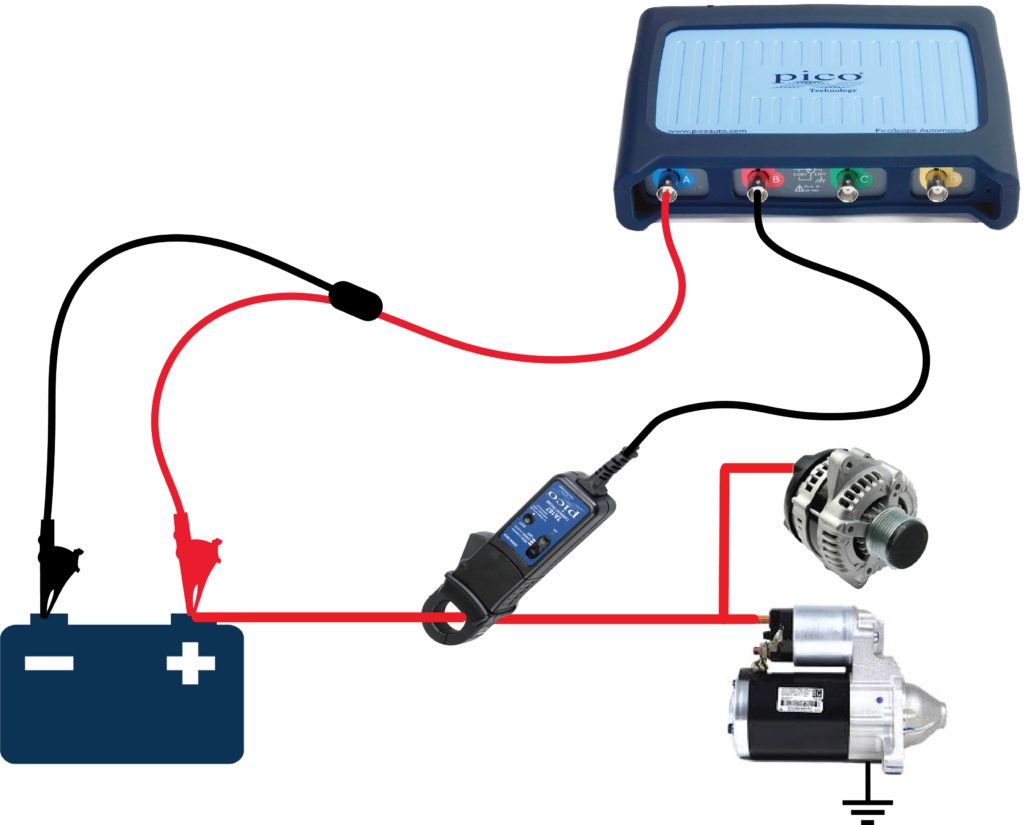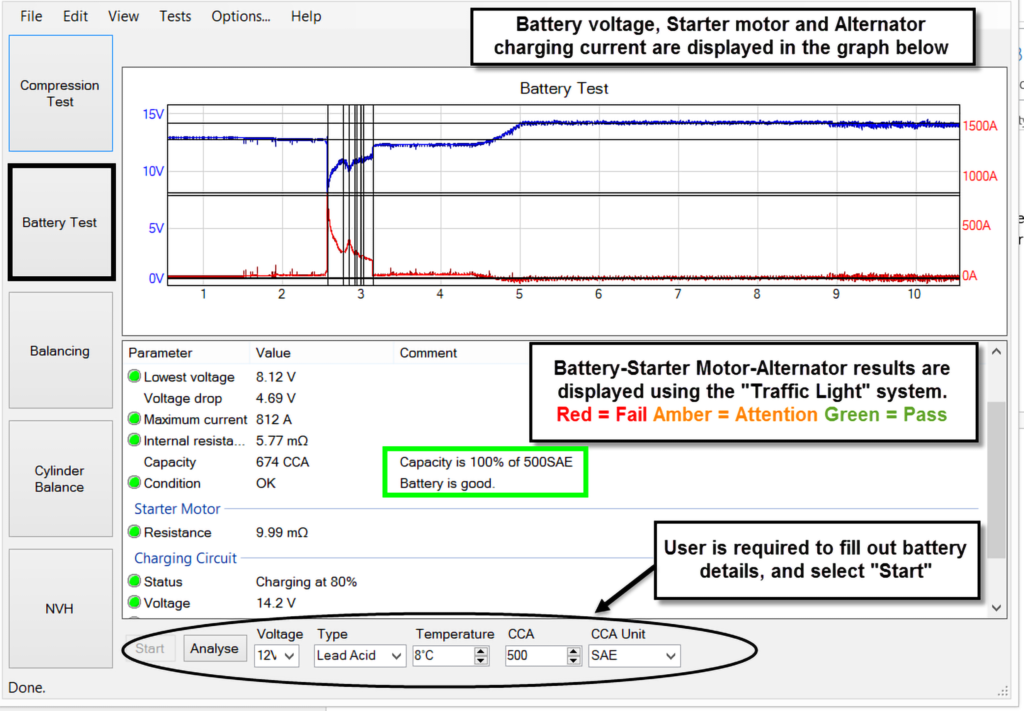Pico Automotive has partnered with Garage Wire to answer your PicoScope questions in a new and exclusive GW Views series of question and answer features.
GW readers have the opportunity to get their PicoScope questions answered by Pico Automotive by leaving their questions in the comments below this article or by emailing them to [email protected].
In the final Q&A of the series for 2019, Pico Automotive discusses PicoScope vehicle battery testing.
Question: Can the oscilloscope be used to test my vehicle battery?
The straight forward answer here is most certainly yes.
PicoScope can test the battery, starter motor and alternator in one very simple automated test.
Whilst PicoScope is packed full of features allowing the user to zoom, measure, scroll and scale through events faster than the blink of an eye, we tend to forget that this processing power can be put to good use in the form of an automated test where the user is not required to have oscilloscope
knowledge.
The PicoDiagnostics software is included in the PicoScope 6 Automotive software, and is automatically downloaded and installed (for free) when you download PicoScope 6 Automotive from our website.
PicoDiagnostics consists of various automated tests, including a battery test.
By using a single test lead connected across your battery and a high-amp current clamp connected around the main battery power cable, we are able to test three major components that can all be responsible for battery failure.

Battery – starter motor – alternator PicoScope connection diagram for battery testing.
The real beauty of the battery test is the ease of setup, requiring the user to connect the test leads
and current clamp as above, enter the vehicle battery specifications found on the relevant battery
I.D label and select ‘start’ from the setup menu.
The user is then prompted to crank and start the engine.
The software will monitor the initial battery
voltage, the voltage drop during cranking, the starter motor current consumption and the battery recovery/charge rate once the engine has started (three component tests in less than 15 seconds).

Above is a typical result sheet from the battery test, confirming that the battery, starter motor, and alternator are all functioning correctly.
This is easy to see due to the “easy-to-read” traffic light system.
Any failures are clearly identified in red, amber indicates “attention or advisory” to a component and green indicates a pass.
How the test works
The initial test carried out by the software is the battery’s open-circuit voltage (OCV) as recorded at the battery connections via channel A of the scope.
From this input alone, it calculates the state of charge of the battery (SOC).
Once the software is happy with the SOC, starting the engine will load
the battery sufficiently to evaluate the battery condition and capacity while revealing the condition of the internal resistance of the starter motor assembly based upon the lowest recorded voltage during cranking and the value of the “inrush” current to the starter motor.
Plotting voltage against current in this fashion gives a real dimension to the efficiency of the battery and the integrity of the starter motor in one very simple and rapid test.
Once the cranking is complete and the engine has started, the software can calculate the recovery rate and efficiency of the battery, the charge rate of the alternator, and the amount of consumption on the alternator in relation to its maximum output (80 per cent in the test results above).
This is a great test to perform as a general health test, especially to prepare vehicles for the winter months.
For further information about Pico Automotive, select ‘more details’ below.
GW readers are invited to leave their PicoScope questions in the comments below this article or to send them via email to [email protected].







